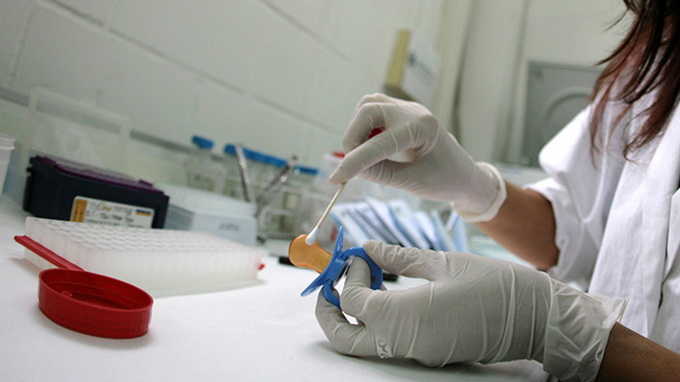Numerous fathers called a genetic analysis center in Hanoi this week raising concerns about their newborn twins whom they doubted might not biologically be theirs, following a rare case of twins born of different fathers.
Nguyen Thi Nga, director at the Center for Genetic Analysis and Technologies (CGAT), said she received incessant phone calls from one father after another on Thursday morning, requesting consultancy on cases where their twins look nothing alike.
These calls came in the aftermath of the first recorded case of heteropaternal twins in northern Vietnam, covered by Tuoi Tre (Youth) newspaper on Wednesday.
Heteropaternal twins are born when two ova (egg cells) from the same menstrual cycle are fertilized by sperm from separate acts of sexual intercourse with two different males. The phenomenon is also known scientifically as heteropaternal superfecundation.
The twins in question were brought in for a DNA test at CGAT by their father prior to Tet, or Vietnam’s Lunar New Year festival, which fell on February 8.
According to Nga, the father in Hoa Binh Province was supposedly pressured by his relatives to take the test due to doubt about one of the twins’ real father, which had arisen from the baby’s appearance dissimilar from any family member’s.
The results came as a shock to the said dad that he is the biological father of only one of the two babies, while his wife mothers both.
Though the names of the parties involved have been kept secret to protect their identity and privacy, the curious case has still made the news so far, sparking a wave of other concerned fathers across Vietnam who are in a similar situation.
No cause for concern
One of the men who rang Nga said he has a pair of twin daughters who will turn one next month.
The father had been troubled by the dissimilar appearances of his daughters since their birth, and his uneasiness has grown over time as their differences become more evident when they get older.
Throughout the conversation, Nga said, the concerned father kept reaffirming his unshaken faith in his wife, but confessed that some thought still burdened him and it was intensified after he heard about the reported case.
Nga said she had to keep reassuring the fathers who raised their ‘concerns’ that there was no cause for worry, as twins looking different from each other is not an uncommon phenomenon, and does not necessarily mean they are heteropaternal twins.
In fact, Nga added, fraternal twins, or twins who were fertilized by two different egg cells, are just like siblings who were born separately and can look very different from each other depending on whom they take after in the family.
“In these cases,” Nga said, “I always take it upon myself to advise the family not to take the DNA test, as heteropaternal twins are extremely rare in practice. Any doubt, no matter how small, can be devastating to their family ties, especially when such doubt hinges merely on the different appearances of the babies.”
There are around 10 pairs of heteropaternal twins recorded worldwide, who can have different skin colors or even completely different appearances from each another, Nga concluded.
Extremely unlikely, but not impossible
Answering a Tuoi Tre question on Thursday about the likelihood of similar occurrences, Vu Ba Quyet, director at the National Hospital of Obstetrics and Gynecology, said the probability is extremely low, but not completely impossible.
Quyet denied commenting on the credibility of recent reports of the pair of heteropaternal twins in Hoa Binh, but said it is possible for a female to bear twins from different males if she has engaged in sexual intercourse with the males within the same menstrual cycle, and her body has released two ova to be fertilized separately by their sperm.
The twins born this way can be different from each other in their appearance, genome, and gender, Quyet added.
Luu Thi Hong, a gynecologist and former general director at the Department of Maternal Health and Children under the Ministry of Health, said it is completely normal for fraternal twins to look different from each other.
According to Hong, the female body generally releases one ovum per month, though some women can release two at different times during a menstrual cycle, and the one that is churned out first, or either of the ova that comes out at the same time, is fertilized by the sperm.
“The conceptus takes seven to eight days to travel to the uterus and cling to its wall. Strictly speaking, a woman is considered pregnant only after the implantation of the conceptus has finished, so even if one of her ova has been conceived, the other ovum can still be fertilized within the seven to eight days it takes for the first conceptus to travel to the uterus,” Hong elaborated.
Like us on Facebook or follow us on Twitter to get the latest news about Vietnam!
























































